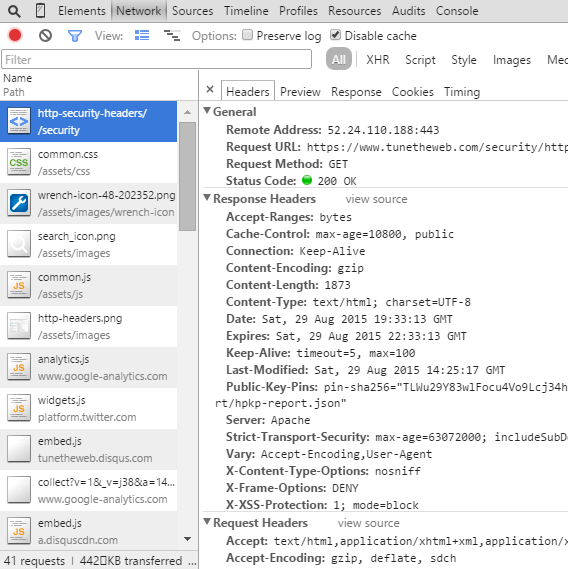HTTP Performance Headers
This page was originally created on and last edited on .
Introduction
When your web browser requests a web page from a web site, as well as returning the web page, the web server will send a lot of extra information back about the file its sent, and how the web server wants you to use it. These headers can be seen on your developers tools in your browser (accessed by pressing F12 in most browsers - before your load a site). The HTTP headers for this website are shown below:

Some of these headers are just extra information about the file (the size, what format the page is...etc), but there are also some performance headings that I have turned on. Most of these are standardised and nearly all of them enjoy wide spread support in most modern browsers.
Each of the performance headers you may want to consider are listed here:
How to set it up
Some of these headers (e.g. Keep-Alive), require nothing more than adding a setting to your web server config, and can often be forgotten about after that. Some (e.g. Caching) require a bit more thought before turning on and you should understand them properly before setting them up on your site. Any risks are clearly highlighted in each of the above pages.
Support
All major web browsers and web servers support these options, though some bugs or implementation choices (particularly with ETags) do reduce the effectiveness of them.
The downsides
Downsides are listed in each individual page above.
Summary
Caching and Keep-Alive is definitely something every website should look to set up
After you have reviewed you HTTP performance headers, you should check out the HTTP security headers, which work in the exact same way but provide security enhancements rather than performance ones.
This page was originally created on and last edited on .
Tweet